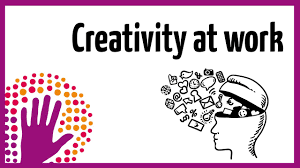
Once upon a time, two salesmen were sent to sell shoes in a strange town.The first salesman, upon arrival, was shocked to realize that no one wore shoes. Immediately, he sent a message to his home office, “I will return home tomorrow. No one wears shoes”.
The second salesman was thrilled by the same realization. Immediately, he messaged the home office saying, “Please send me more shoes. Everyone here needs them”.

Disposition and perspective is key. It’s in standing on both concepts that a curator identifies good arts. Life imitates arts, same as businesses too. Just like the first salesman, there are business people who don’t see possibilities and opportunities, even if it was in front of them. These are everyday people with sight, but more blind; no vision. There are people too stuck up in their small world of expected opportunities that they don’t see others pass by, people too close to their thoughts that they can’t think right. They are people in the picture, so can’t see it. The Wright brothers, inventors of the aeroplane while growing up was taught by their fathers to switch sides in any argument. They often took two different sides of an argument, debated the subject, then switched sides and debated the opposing argument. It’s how the board room should attempt to reach decisions .It’s how to get a balanced view that leads to superior solutions.This is perhaps why only the Wright brothers could have delivered the invention of a plane. This is because an aeroplane actually runs on two opposing theories of physics (gravity that keeps things on the ground and aerodynamics that takes it off the ground). Intelligence comes this way.

In painting, most large format artists use a technique we all can learn from. Once upon a time, a painter was hired to repaint a very large fresco on an expansive space. The painting which is supposed to be the village community school badge as directed – the image silhouette of a lantern – on an open book. This was supposed to be sitting expansively right on the village town’s wall. This was a difficult task because the painting was so large that the artist could only see a small portion of it at a time as he painted. Isn’t this how life is?
For the artist to be in perspective, he hires another assistant to stand a distance away in order to see the whole picture and give directions to him. It’s called having disposition. If that artist had tried to paint according to his own limited perspective, seeing only a small part of the picture, he could have made a mistake. By following other people’s directions from a better view, he creates an image that delights everyone. Welcome to arts, welcome to life, business men should learn to do that too. Staff at a pharmaceutical company called Pfizer were working on the development of a medicine to tackle heart complaints. What emerged – completely unintentionally – was a drug to combat erectile dysfunction in men: Sildenafil, better known by the trade name Viagra. It became one of the biggest hits ever for Pfizer. It came from collaboration of people with different views. Different perspectives birth paradigms for growth.

Someone once asked me the difference between perspective and perception. Perception is defined as What I See; but Perspective is how I see it. To get the best of both, you bring in paradigm, a third force that shifts views. In life or business, the gap between Perception and Perspective explains where you are. It’s called Mentality. Only a few people have the right one. Those who do usually gets it from exposure to other thoughts of comparison. I travel a lot, selling business solutions as a consultant. And in this trade, I see two kinds of people, one refers to those with the thinking “I can’t afford it” versus people who ask, “How can I afford it”. Brilliance comes from a hybrid of structure and creativity, right brand and left brain in a flux. I strongly recommend that every business has an advisory of masterminds; a team of experts that can play oracle. Better yet, the Oracle of Delphi. Delphi is a concept of reaching resolutions in board level meetings when you have a league of masterminds. It is based on the principle that forecasts a decisions from a structured group of individuals are more accurate than those from unstructured groups. It involved having experts in a room, having them give their thoughts and deleting the most unlikely thoughts through some predefined cycles. In this method, all the feedback from the different experts is collected anonymously by the moderator.

Then it is collated, summarized, and the most common solutions (say top 3 most common answers) are selected, and sent for further selection in a second round. In each round, the solutions get refined, and the least popular ones are dropped off by the moderator.
Thus, the best solution is reached after a few rounds, without hurting anyone’s ego, or naming any particular expert or their school of thought particularly. Just like the Ancient Greek philosophers of the Oracle of Delphi states, “an intelligent man is one who enters with ease and completeness into the spirit of things and the intention of persons and problems , and then arrives at an end by the shortest route”. That shortest route come through collaboration.
You may have heard people describe themselves as strictly “right-brained” or “left-brained,” with the left-brainers bragging about their math, structured, analytical and logical skills and the right-brainers touting their creativity.Yes, some people’s side of the brain is more dominating than the other.You need both for the two sides of the brain to work together to perform a wide variety of tasks and that the two hemispheres communicate through the corpus callosum, but great entrepreneurs rely on a balance of both.. It’s the ability to think out of the box, as a matter of fact, it is the ability to think like there is no box. My dear, how you see things and how you think, explains who you are, where you are, where you are going to. Some people just give up when things seems not within their reach.

I love the story of a monk who was meditating at the riverside when a young man interrupted him. “Master, I want to become your disciple,” said the man. “Why?” replied the monk. The young man thought for a while and said “Because I want to find success and perhaps become great”. The monk at this point played numb to his statement as he buried his mind into the stroking of his finger in a back and forth loop deeper into the water, gently making ripples and leaving the young man inattentively to suspense. After a few minutes of the man repeatedly, pleading, the monk looked up to him. Speechlessly, the monk grabbed the man by the scruff of his neck, dragged him into the river, and plunged his head under water. After holding him there for a minute, with him kicking and struggling to free himself, the monk finally pulled him up out of the river. The young man coughed up water and gasped to get his breath. When he eventually quieted down, the monk spoke. “Tell me, what you wanted most of all when you were under water. “Air!” answered the man. “Very well,” said the monk. “Go home and come back to me when you find a passion worth fighting and the right need for fulfillment as much as you just wanted air. That’s the key to success and greatness”. Every great business takes time to grow. Every great art took a while to get to mastery. Every seed takes time to grow into a tree, so does your business.

In China, there’s a unique type of tree planted by the Chinese called the Chinese bamboo tree. Its story is a template of what persistence and perseverance really is. When planted, it doesn’t sprout out of the soil for almost six years. It doesn’t show any sign of life nor growth but the Chinese guys would still go ahead and fertilize and water it daily for those six ‘horrible’ years. Surprisingly, in the 7th year, the bamboo tree under just seven weeks sprouts and grows up to a height of 70 feet. So the question always is, did the tree attain that great height in just seven weeks or was it in seven years? In reality, it happened in 7 years because if the Chinese had given up at anytime within those six ‘horrific’ years. The tree would have died beneath the soil.

It’s from collaboration and consistency in adjusting sails that excellence is born. Whether life, business or art, the same principle runs them. It is hard to imagine the excellence of Mona Lisa’s painting by Leonardo Da Vinci, Picasso’s, Guernica, any of Michelangelo’s work, or Andre Le Notre laying out the exquisite landscape designs for Vaux-le-Vicomte, and later the magnificent Chateau de Versailles. You think of these guys with no sophisticated software, no high hill to stand on, no helicopter to fly in, and no drone to show him the complexities of the terrain. Yet they did, and with extreme precision, accuracy, feedback and high style. The world still needs this kind of habits in the workplace, mastery.
First of all, understand that everything in life is in a state of becoming. Everything can change. It starts when you do not see living as a science (methodology) but as an art (creativity). To be creative in the business sphere is to kill the thoughts called impossible. Challenge status quo simply by choosing to think out of the box. From an understanding of the connections between your left brain (structure) and the right brain (creativity), understand how to create a balance. Learn to use reality to create a framework for your imaginations. There is a delicate balance and a thin line between creativity and insanity. To be creative is to be abnormal except that you should structure your insanity and then create a masterpiece from aligning it back to the reality others can relate with else what you were trying to be creative with becomes a mess.

Creativity works with insights. To invoke the powers of insights is to not allow the outer noise of other people drown your inner voice, for it is most times right. Listen to your first thought, your inner voice, and its called insights.
When faced with challenges, you can either add value by creating solutions or you can find excuses and complaints. The business world requires creative people; you can either choose to be a problem to the solution or a solution to the problem.

The fastest way to kill creativity is to constantly complain. Once you begin to complain, your brain goes into hibernation. You can never complain your way to success or creativity. True creativity comes from innovative thinking.
There is always a thin line between thinking, creativity and innovations. Making a product out of thinking is creativity. On the other hand, innovation is the successful implementation of creative ideas within an organization to create a real solution or product.
Eizu, ©Hexavia!
Strategy. Business StartUps and Corporate Restructuring Consulting
T: 08035202891
Uwaoma Eizu is the lead strategist at Hexavia! He is a graduate of Mathematics with two MBAs and over a decade of experience working with startups and big businesses. His core is in building startups and in corporate restructuring. He is also a certified member of the Nigerian Institute of Management, Institute of Strategic Management of Nigeria and the Project Management Institute, USA. By the side, he writes weekly for the BusinessDay newspaper.


